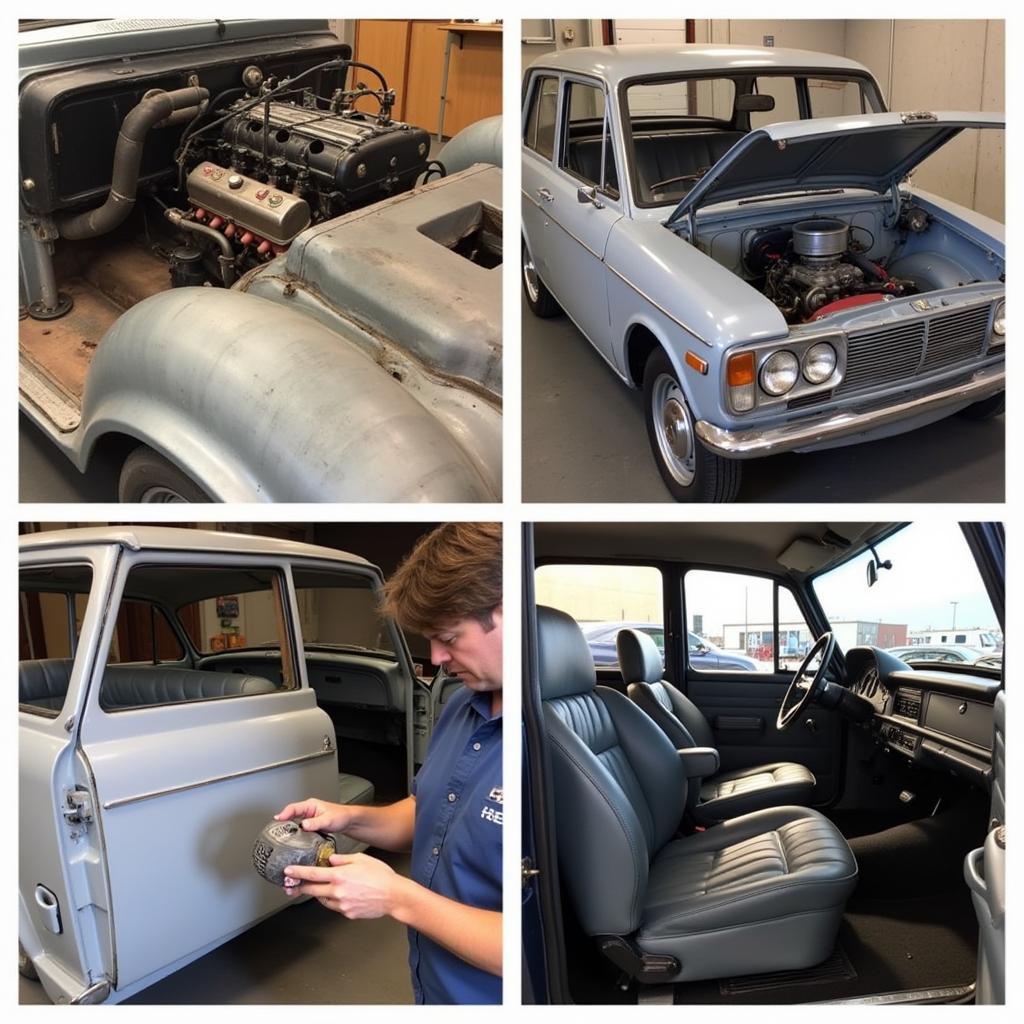Fixing a timing belt on a car is a crucial maintenance task that, if neglected, can lead to catastrophic engine damage. This guide will walk you through the process, offering valuable insights and practical tips whether you’re a seasoned mechanic or a car owner looking to tackle this job yourself. how to fix the timing belt on a car
Understanding the Importance of the Timing Belt
The timing belt synchronizes the rotation of the crankshaft and camshaft, ensuring that the engine’s valves open and close at the precise moments. A broken timing belt can cause the pistons to collide with the valves, resulting in bent valves, damaged pistons, and potentially a ruined engine. Regular timing belt replacement, as specified in your car’s owner’s manual, is essential preventive maintenance.
Gathering the Necessary Tools and Parts
Before you begin, gather all the necessary tools and parts. This typically includes a new timing belt kit (which often includes the belt, tensioner, and idler pulleys), wrenches, sockets, screwdrivers, a torque wrench, and a timing belt alignment tool. Having everything at hand will streamline the process and prevent unnecessary delays.
Step-by-Step Guide to Fixing a Timing Belt
- Disconnect the Battery: This is a crucial safety step to prevent accidental electrical shocks.
- Remove the Necessary Components: Access the timing belt by removing components like the serpentine belt, timing belt covers, and any other parts obstructing access, as outlined in your car’s repair manual.
- Align the Timing Marks: Before removing the old belt, carefully align the timing marks on the crankshaft and camshaft sprockets. This ensures proper engine timing after the new belt is installed.
- Remove the Old Belt: Once the timing marks are aligned, loosen the tensioner and carefully remove the old timing belt.
- Install the New Belt: Install the new timing belt, ensuring it is properly routed around all pulleys and sprockets. Double-check the alignment of the timing marks.
- Tension the Belt: Using the appropriate tools, tension the new belt according to the manufacturer’s specifications.
- Reassemble the Components: Reinstall all removed components in the reverse order of disassembly.
Common Mistakes to Avoid
- Incorrect Timing Mark Alignment: This can lead to severe engine damage. Always double-check the alignment.
- Over-tightening or Under-tightening the Belt: Both can cause premature belt failure. Use a torque wrench and follow the manufacturer’s specifications.
- Using Incorrect Parts: Always use the correct timing belt kit specified for your car’s make and model.
Why Professional Help Might Be Necessary
While some car owners are comfortable tackling this job themselves, how much to fix timing belt on car requires specialized knowledge and tools. If you’re unsure about any part of the process, it’s best to consult a qualified mechanic.
“A properly installed timing belt is vital for engine longevity,” says renowned automotive expert, Robert Johnson. “Don’t underestimate the complexity of this task. If in doubt, seek professional help.”
How To Fix a Timing Belt on a Car: FAQs
-
How often should I replace my timing belt? Consult your car’s owner’s manual for the recommended replacement interval.
-
What are the signs of a failing timing belt? A ticking noise from the engine, difficulty starting, or engine misfires could indicate a problem. fixed thrown timing belt now car is misfiring
Conclusion
Fixing a timing belt on a car is a critical maintenance task that should not be overlooked. how to fix a timing belt on a car by following the steps outlined in this guide, or seeking professional assistance when needed, you can prevent costly engine damage and ensure your vehicle runs smoothly for years to come. For further assistance, connect with AutoTipPro at +1 (641) 206-8880 or visit our office at 500 N St Mary’s St, San Antonio, TX 78205, United States.







Leave a Reply